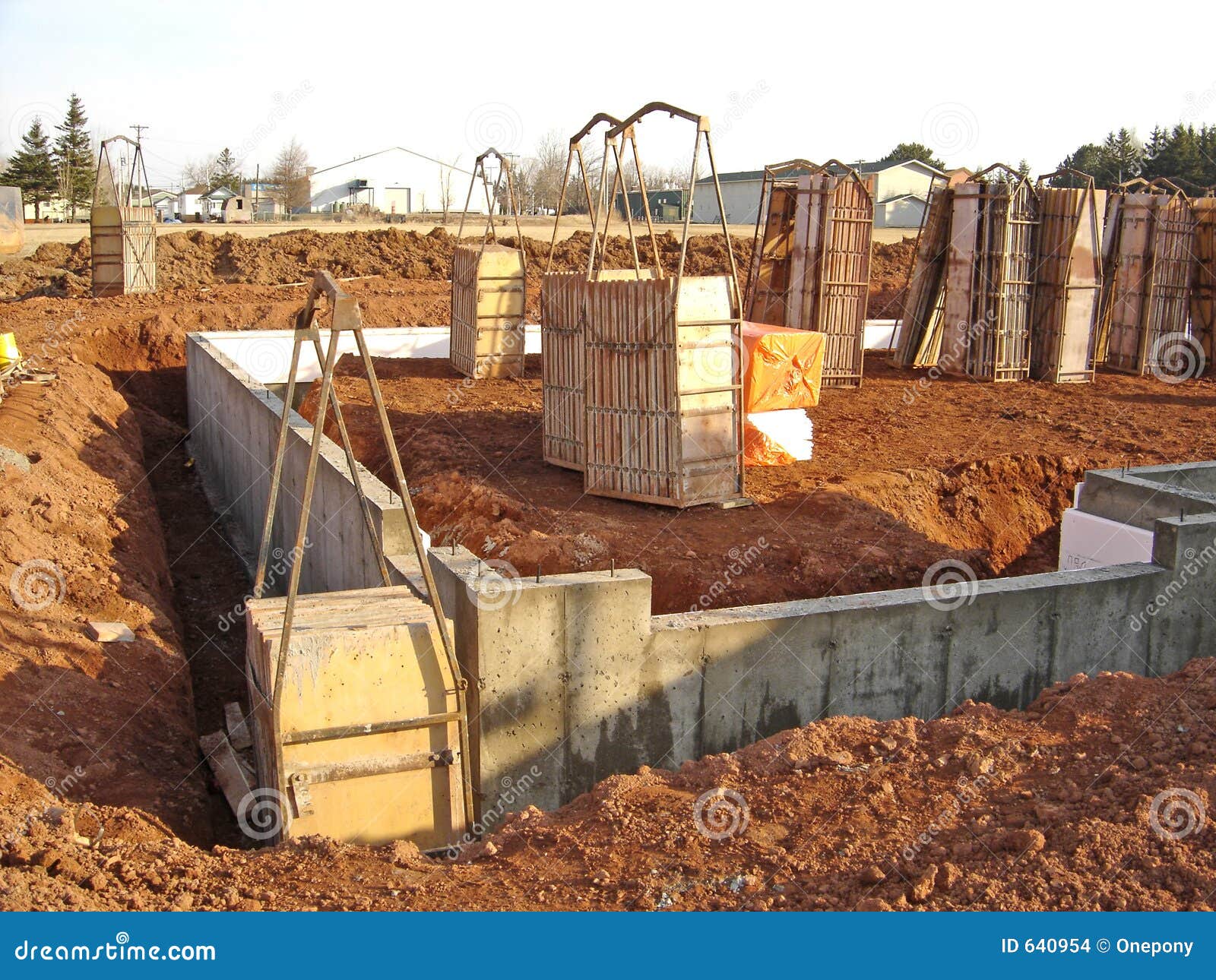Table Of Content

During placement of concrete insert the vertical dowels in the concrete, spaced at 48" on center and protruding approximately 16" + about the concrete. The vertical dowels provide lateral support to the foundation wall as well as connect the ICF concrete to the footing. ICF manufacturers may have engineering tables for the design of footing sizes following code design criteria. Still, they may not last as long as concrete foundations and can only be used in completely dry soil. Choosing the right foundation type for your home is a critical decision that impacts its longevity, maintenance, and overall structural integrity.
House Foundation Types
When they arrived at the job site, a crane simply lowered them onto compacted stone, where they were glued together with a polyurethane adhesive. “There is nothing that can be compared with its view … the buildings are visible from Central and fit so well in the skyline,” he said. For the base of the structure of Cameron Mansions, Lee said there would be at most some plaques to tell visitors what had happened there if it could be kept. The Kremers have two children and had been living in Franklin, where they have family close by to help, according to the foundation’s website.
Concrete Slab Foundations
While you can place a manufactured home on almost any foundation, many homeowners opt for pier and beam foundations unique to manufactured homes. Many builders prefer them over concrete blocks because they don’t allow water or earth in since they’re a solid piece. Basement foundations can be finished (see finished basement ideas here and see the different types of finished basements here) or unfinished. Unfinished basements often serve as storage areas or contain water heaters, furnaces, and other household equipment. Slab-on-grade foundations are affordable, but they’re more expensive and require more time than a poured slab.
A UHart student was looking forward to returning to South Africa. A hit-and-run stymied her plans.
Lot grading can also impact your ability to have a specific foundation build. You might want a daylight basement, but if the lot isn’t graded just so — or if you don’t have modifications in your budget — you might only be able to choose a traditional basement. If there is rock below your build site, for example, you might need a structural engineer to examine the lot and figure out a plan for building over it. In other cases, unstable soil could mean you need to select a different build site. For manufactured home installations, a different type of pier and beam foundation is useful (and often affordable). First, anchors go into the ground to hold against wind and other weather.
Less Common Home Foundations
Since the concrete pour is complete in one nonstop step, the finished result is a seamless wall or base of solid concrete that acts as a support and protective barrier for the home. The type of foundation you choose is crucial for the long-term stability and functionality of your entire structure. Soil conditions, landscaping, climate, budget, and the building’s intended use all play a role in determining whether a crawl space or slab foundation is the better fit for your project. Most houses have a raised perimeter foundation that supports floors and load-bearing walls. Some are built on a flat, concrete slab, which provides both a base for the structure and serves as the bottom floor of the house. Still others, notably vacation homes as well as small, older houses, oftentimes rest on a series of concrete piers.
The footing, stem wall, and concrete subfloor all go down at the same time, and the slab is a few inches thick. Instead of footers, there are thicker areas of concrete where load-bearing walls go. The home’s foundation can be one of the most expensive aspects of a project.
How Fox Blocks Can Help You Achieve a Solid Foundation
Piers are usually made with concrete masonry units (commonly called concrete blocks or cinder blocks). Piers and columns should be placed on a footing that is wide enough and thick enough to bear the vertical load. Like a basement foundation, a crawl space provides access to structural, plumbing, electrical, and HVAC components for easier remodeling and repair. The primary disadvantage of crawlspace foundations is that they are prone to water intrusion and condensation, and the mold and wood rot that results from excess moisture.
Installing the ICFs
Termites can destroy and wreak havoc on wood construction and house foundations. So, apply a chemical anti-termite treatment on the sides and bottom of foundation trenches before pouring concrete. The treatment creates a chemical barrier to repel and eliminate termites before they enter the foundation.
As the name suggests, a poured concrete slab is simply an 8-inch-thick, flat section of concrete that is poured using wood forms. Slabs typically contain rebar (metal rods wired together to create strength), but they may not have footings (thick sections of concrete under load-bearing walls. Foundations are designed around the soil conditions and the size of the building to be built in order to prevent heaving and buckling. The depth and dimensions of the footings and type of foundation depend on a number of factors. These foundations are made from poured concrete – usually between four and eight inches deep – and reinforced with steel bars called rebar.
The insulation stays in -place eliminating any form stripping or additional labor. These types of foundations are especially common in warmer climates such as California, Texas, the Northwest, and the South. They’re also a popular choice among architects designing homes where earthquakes occur frequently. By understanding the functions, advantages, and challenges of various foundation types, you empower yourself to make well-informed decisions for your home’s structural support system.
The final step is to remove the bracing and clean up the interior of the structure. Once the foundation is set and the bracing removed, you can move on to installing the waterproofing and/or dampproofing, floor system, above grade walls and interior finishes. Tall foundation walls require anchor bracing to hold the wall straight and plumb until the concrete sets. The bracing also provides a safe framework to support scaffolding. A Fox Blocks ICF foundation costs 20% less than either a poured concrete wall or a concrete block foundation.
While decks and small outbuildings may not need full foundations, they still require solid support from piers resting on well-buried footings. Typically, piers and footings are poured on separate days to allow time for the concrete to cure. Now Tom does it in one shot using funnel-shaped plastic footing forms fitted with cylindrical pier forms. “As far as I’m concerned, there’s no better way to make a concrete pier,” he says. Additionally, the wood is used to elevate the home off the ground, which helps protect the house from water damage and pest infestations. When it comes to foundation materials, poured concrete is the most common, but home builders may also choose to use insulated concrete forms (ICF) to create the foundation.
A crawl space foundation is a type of building foundation commonly used in residential structures. It’s typically constructed with a shallow excavation beneath the ground level, creating an accessible space between the ground and the first floor. It’s not advisable to build a basement if you live in an area with flooding risks. And even in an area that’s not prone to flooding, experts recommend installing special equipment, like a sump pump. In this comprehensive guide, we journeyed through the diverse world of house foundation types, exploring the intricacies that make each unique. Whether planning a new construction or seeking to understand your existing home’s structural support system, the knowledge of foundation types is paramount.
Pickup truck strikes building in Brockton, damaging foundation - Boston.com
Pickup truck strikes building in Brockton, damaging foundation.
Posted: Mon, 15 Apr 2024 07:00:00 GMT [source]
Along with running his own contracting company, he has worked as a building mechanic and a carpenter. His work spanned industrial, commercial and residential construction projects. He now enjoys sharing his experience by writing informative and helpful articles for both industry professionals and average homeowners. Consult a professional if you’re unsure about your ability to lay a foundation. Remember, the cost of repairing your foundation could be more expensive in the long run than hiring an experienced contractor to pour the foundation. Hiring a professional foundation contractor might seem pricier upfront, but it typically guarantees higher quality, faster completion, and peace of mind.
It often involves installing some type of moisture barrier and filling cracks and joints. It costs less than full waterproofing—usually between $3 and $6 per square foot—but isn’t nearly as effective, particularly in damp climates. Keeping water out by treating the inside of the concrete is difficult if not impossible and can cause deterioration of the concrete walls.

Properly insulated, they can double as thermal mass, capturing heat during the day and radiating it back into the house at night. They can also serve as a home for a radiant heating system, a popular option in colder climates. Radiant heating obviates the need for ductwork, which can be a source of poor indoor air quality. Here’s a classic passive solar home, plan , with radiant heating built on a slab. Basement waterproofing is essential to prevent water damage & other costly problems like mold growth. Erect wooden planks or plywood along the inner perimeter of the foundation trenches to contain the concrete pour.

No comments:
Post a Comment